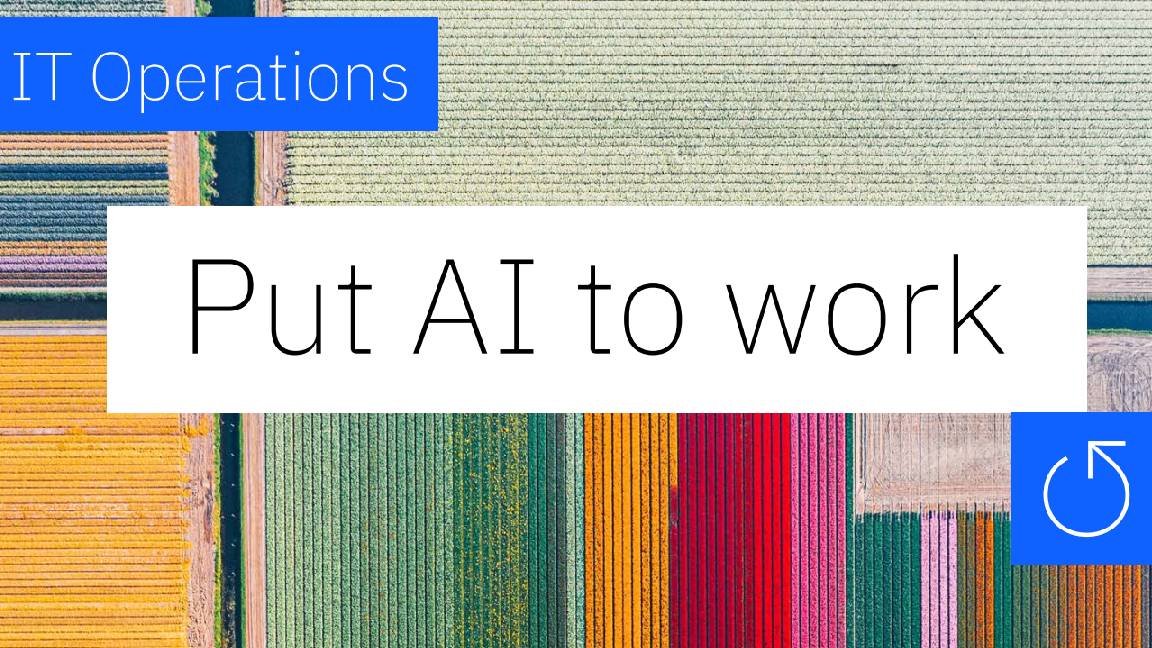Agentic AI investment is putting the cart before the horse
Businesses don’t fully trust generative AI as it is – why are we talking about giving it more responsibility?


Flying frequently for work, I’ve been afforded many a dull moment to myself looking out the window at the stationary tarmac and listening to the captain tell us “we should be on the move shortly”.
It’s in these moments that I’m reminded of an interesting comparison, one between technology’s long-established role in commercial flight and AI’s burgeoning role in the enterprise.
Since the inception of flight, computers have played an increasingly significant role in air travel, now powering all sorts of behind-the-scenes processes. According to aircraft accident investigator Barry Strauch (cited by Forbes) this has fundamentally changed from a physical manipulation of flight controls to the control of systems.
As advanced as these systems have got, I very much doubt most passengers would board if there wasn’t a pilot there – even as the role of pilots has been increasingly augmented by technology. I feel a similar concept can be applied to generative AI. No matter how advanced this technology becomes – and it has certainly advanced very quickly over the last couple of years – I think there will always be a desire for human presence.
Holding this opinion, It seems strange to me that big tech has emerged as so bullish on agentic AI over the last few months. Agentic AI, for those unfamiliar, refers to AI models that can automate entire tasks from start to finish without human involvement.
AWS, Microsoft, Google, and OpenAI have all signalled at least some interest in agentic technology. With research implying that this brand of AI could be a serious money spinner for big tech, as it drives larger scale autonomy and a new ‘service-as-a-software’ market, this is no great surprise.
What strikes me as most alarming, however, is how this flurry of excitement around the agentic future has outpaced any sense of the industry’s present. After all, trust in AI is still middling. Execs may be onboard, but many IT workers are still unsure – a recent study found just three in ten would trust AI to make business decisions without human involvement. And it’s not like AI that works alongside humans is flawless, either.
Get the ITPro daily newsletter
Sign up today and you will receive a free copy of our Future Focus 2025 report - the leading guidance on AI, cybersecurity and other IT challenges as per 700+ senior executives
Take AI coding tools such as GitHub Copilot or Gemini Code Assist, which have gained popularity with developers. Enthusiasm for these tools is high, with one GitHub survey suggesting many developers cite improved code quality and faster language adoption on the back of coding tools.
But this is hardly the sentiment across the board. A more recent survey from software delivery firm Harness found that over half (59%) of developers reported problems with code deployments at least half the time. It also found 67% developers spend more time debugging AI-generated code.
If this is what the current generation of generative AI offers, what hope is there for the promised agentic future? If devs still need to go back over AI-generated code to check for errors or vulnerabilities and improve the quality of deployment, there seems little chance they would be willing to let an AI agent take the reigns.
Then there’s the problem of hallucinations, when AI produces erroneous responses to questions. As recently as August 2024, 60% of tech leaders told KPMG that hallucinations were still their top concern when it came to adoption of generative AI tools.
RELATED WHITEPAPER

Hallucinations have grabbed headlines in the consumer world, with Apple’s AI news function recently generating fake information about the PDC World Darts Championship semifinal. It’s not hard to see how similar hallucinations could have a catastrophic impact on enterprise AI functions.
Again, then, who in their right mind would let AI take the controls, without at least a human copilot? The technology is still largely in it’s nascent state. AI developers need time – maybe a lot of it – to iron out the flaws with generative AI as it stands before businesses build up a suitable amount of trust.
A testament to this is the fact that many firms are actively pursuing an answer to some of generative AI’s current problems. AWS has taken a firm stance on hallucinations, introducing ‘Automated Reasoning’ as a method of mathematically validating the accuracy of it’s generative AI response.
As Peter van der Putten, head of the AI lab at Pegasystems and assistant professor of AI at Leiden University, told ITPro at the time, this is not a silver bullet for solving the hallucination issue. Unless I am mistaken, no tech firm has yet to develop a completely convincing cure for AI hallucinations.
Until a developer does, I can’t quite understand the all-in attitute toward agentic AI. While the promise of the technology is certainly alluring and potentially a real driver of value if it works as its prophesied, the fact of the matter is that the trust just isn’t there yet.

George Fitzmaurice is a former Staff Writer at ITPro and ChannelPro, with a particular interest in AI regulation, data legislation, and market development. After graduating from the University of Oxford with a degree in English Language and Literature, he undertook an internship at the New Statesman before starting at ITPro. Outside of the office, George is both an aspiring musician and an avid reader.
-
 Geekom Mini IT13 Review
Geekom Mini IT13 ReviewReviews It may only be a mild update for the Mini IT13, but a more potent CPU has made a good mini PC just that little bit better
By Alun Taylor
-
 Why AI researchers are turning to nature for inspiration
Why AI researchers are turning to nature for inspirationIn-depth From ant colonies to neural networks, researchers are looking to nature to build more efficient, adaptable, and resilient systems
By David Howell